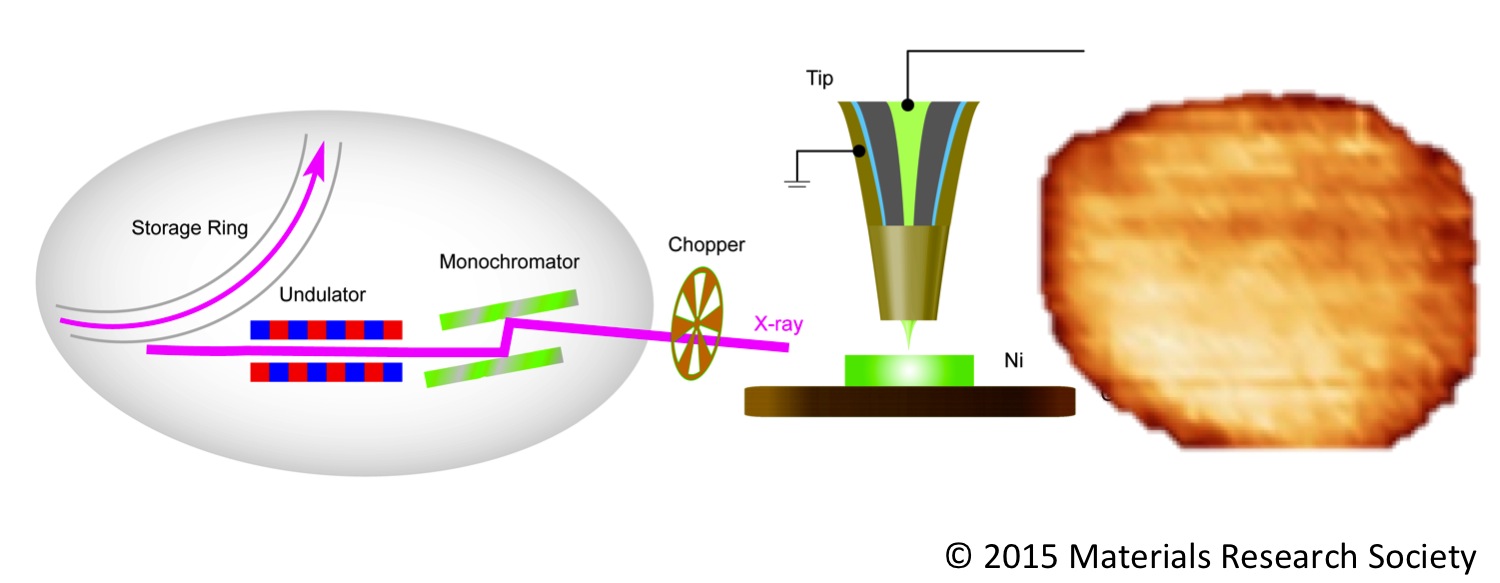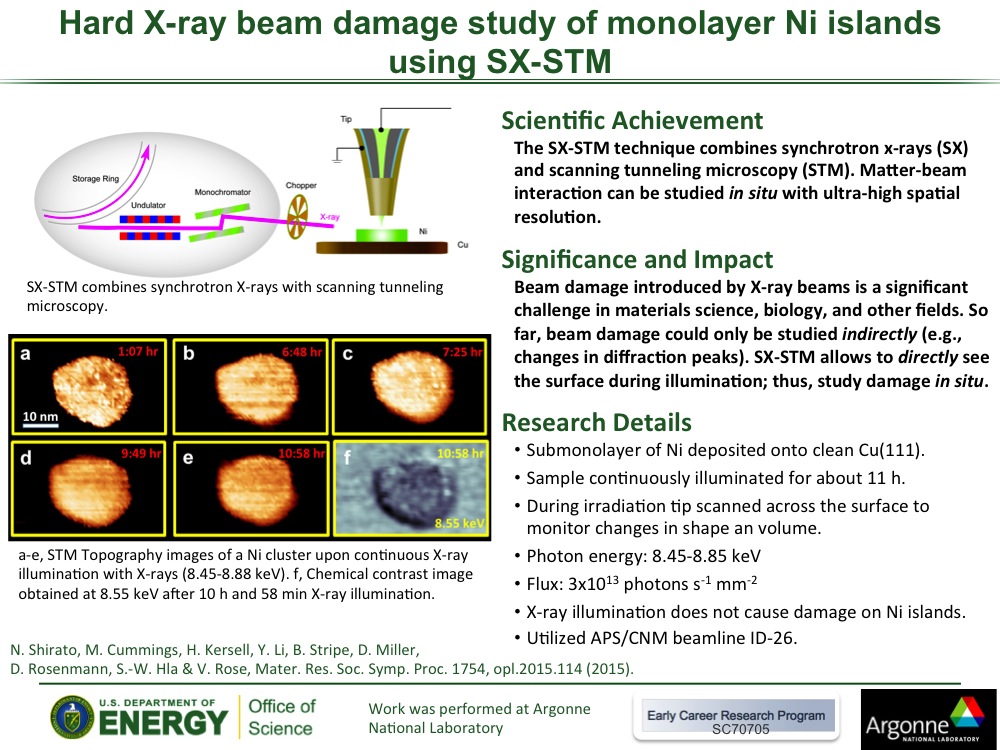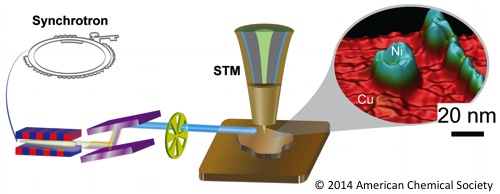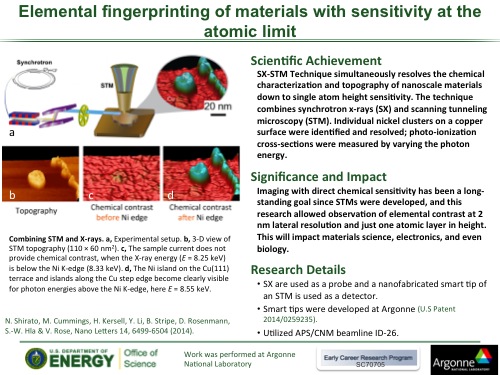| Hard X-ray beam damage study of monolayer Ni islands using SX-STM | |
|
X-ray beam-induced damage in nanoscale metal islands was investigated. Monolayer-high Ni islands were prepared on a Cu(111) substrate. High brilliance X-rays with photon energies between 8.45 and 8.85 keV illuminated the sample for about 11 hours. In order to track changes in the morphology of the islands, the synchrotron X-ray scanning tunneling microscopy (SX-STM) technique was utilized. The result shows that X-ray illumination onto Ni islands does not induce noticeable damage. The study demonstrates that local beam-induced changes can be studied using SX-STM. |
|
|
See: Nozomi Shirato1+, Marvin Cummings1, Heath Kersell2, Yang Li2, Dean Miller1, Daniel Rosenmann1, Saw-Wai Hla1,2, and Volker Rose1*, “Hard X-ray beam damage study of monolayer Ni islands using SX-STM”, Mater. Res. Soc. Symp. Proc. 1754, opl.2015.114 (2015). Author affiliations: 1Argonne National Laboratory, 2Ohio University Correspondence: * vrose@anl.gov, +nshirato@anl.gov |
|
|
Download Highlight Slide: |
|
| Elemental Fingerprinting of Materials with Sensetivity at the Atomic Limit | |
|
Using the SX-STM technique, the chemical fingerprint of individual nickel clusters on a copper surface at a two-nanometer (nm) lateral resolution, and at the ultimate single atom height sensitivity were detected. By varying the photon energy, we were able to use the difference in photoabsorption cross sections for nickel and the substrate Cu to chemically image a single-nickel nanocluster - thus opening the door to new opportunities for chemical imaging of nanoscale materials. Until now, a spatial limit of about only 10-nm was attainable and photoionization cross-sections could only be obtained as an average over a large sample area. |
|
|
See: Nozomi Shirato1, Marvin Cummings1, Heath Kersell2, Yang Li2, Benjamin Stripe1, Daniel Rosenmann1, Saw-Wai Hla1,2+, and Volker Rose1*, “Elemental Fingerprinting of Materials with Sensitivity at the Atomic Limit”, Nano Letters 14, 6499-6504 (2014). Author affiliations: 1Argonne National Laboratory, 2Ohio University Correspondence: * vrose@anl.gov, +shla@anl.gov |
|
|
Download Highlight Slide: |
|




